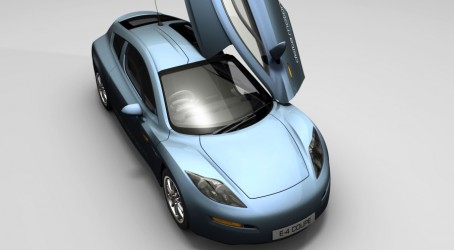Articles
Schaffler UK has developed a hybrid bearing technology that will be installed on an all-electric road car that is capable of 0-60mph in less than five seconds and a top speed in excess of 150mph.
The Delta E-4 coupe from electric vehicle manufacturer Delta Motorsport, is a four-seater, two-door coupe that has a range of more than 200 miles on a single charge.
The key to the E-4 Coupe's performance is its direct-drive electric motor that powers the car. Designed in partnership with Oxford University and Oxford Yasa Motors, the axial-flux electric motor generates more than 600Nm of torque while only weighing 23kg.
Nick Carpenter, technical director of Delta Motorsport, said: "The bearings were absolutely critical to enabling the modular design of the yokeless and segmented armature [YASA] motor that we helped to design with Oxford.
"Ultra low energy vehicles such as the E-4 Coupe rely on lightweight components to compensate for the inherent problem of the low energy density of lithium batteries when compared to gasoline. When I first came up with the idea of the new bearing arrangement that would help to optimise the space available for the stator while accurately controlling the air gap to the rotors, I almost dismissed it due to the fact that standard bearings would have been too big and heavy. However, following discussion with Schaffler, the company's engineers were able to offer a special design of hybrid double-row angular contact ball bearing, which has a split inner ring that was able to meet the demanding criteria of reduced weight and cross-section."
Delta motorsport said that this was the breakthrough needed for it to fulfil its ambition of developing a highly-efficient plug-in battery electric 'car for the people' that is capable of overcoming the 'range anxiety' perceived by many purchasers of all-electric vehicles.
Stewart Davies, senior applications engineer at Schaffler UK, says: "The challenge was to keep the bearing as narrow as possible in order to meet the dimensional constraints of the design envelope inside the YASA motor, whilst at the same time offering a commercially viable bearing solution within a very tight timescale."
Schaffler UK has supplied the first samples four months after it started work on the project. Davies continues: "The initial bearing design concept proved to be too expensive and threatened to jeopardise the project. Following design calculations, we were able to offer a single hybrid bearing that met the key design criteria of high performance, reliability and ease of assembly but that could also be competitively produced in volume.
One of the problems encountered by Schaffler's design team was the high seal lip speed. With the bearing rotating at such high speeds, all calculations indicated that the seal would wear out and that the bearing would fail prematurely. By specifying a non-contact shield, this problem was solved. Another advantage of using a non-contact shield is the increased life expectancy of the grease.
According to Davies "a hybrid bearing has all the insulation qualities required for use in electric motors, including low friction, but the non-contact shield has doubled the life expectancy of the grease which has further enhanced the performance of the bearing."
